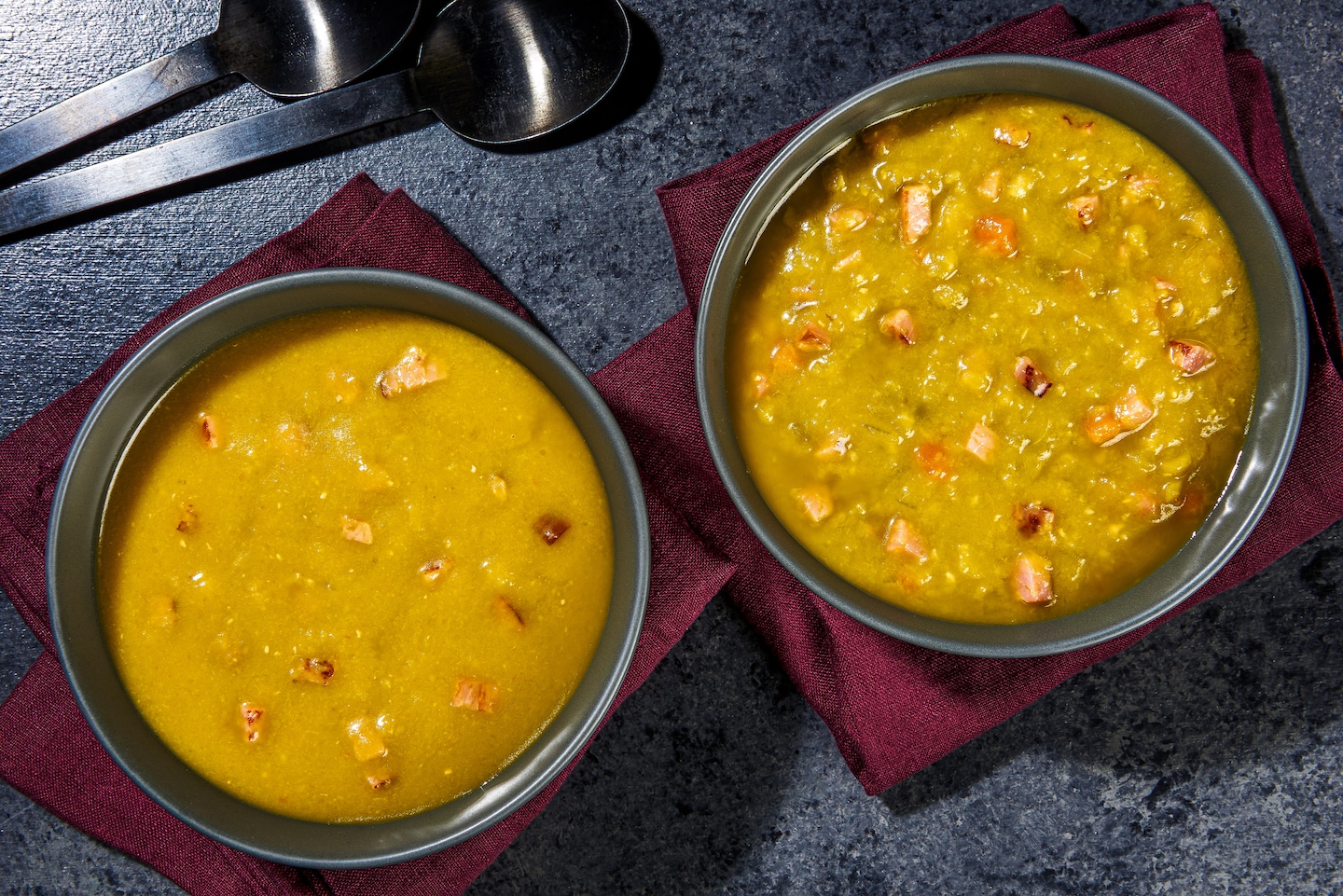It was early December when my weather app predicted snow. I called my mom.
------Advertisement-----
“What’s your split pea soup recipe?”
“Oh, hmm,” she said, “I always started with onions and a big bag of split peas … I like to add carrots and chunks of ham …”
------Advertisement-----
I took notes as I imagined the flavors of the soup developing in the pot, the sauteed onions and carrots sweetening the earthy peas, the ham adding a hint of smokiness. As she continued describing her recipe, I realized that I first tasted this soup almost 40 years ago.
When I was a toddler, my parents owned a small restaurant in Chicago. The sign outside, an illuminated rectangle that featured , read “Gashi’s Hot Dogs.” (It was named after my mother, who ran the place.) The small operation consisted of a kitchen in the back, a long orange counter, maybe a dozen stools and a small box TV mounted in one corner near the ceiling.
------Advertisement-----
Under a register in the middle of the counter was an open cabinet, perhaps 3 feet by 3 feet. This was my cubby. It was cozy, with pillows and blankets; I decorated the inside with stickers. For most of the day, I napped, sang to my dolls, flipped through books or played with My Little Ponys. All day, the TV played news or sports. But in the late afternoons, my mom sat me on the counter and switched the channel to my favorite show, “Scooby-Doo.”
In addition to managing the place, taking orders and serving, my mom cooked all of the food. Though it was a fully functional restaurant inside a brick building, in Chicago, this sort of place was known as a hot dog stand. Naturally, there were hot dogs — Chicago-style, of course, but also chili dogs. Every day, my mom made that chili and a few different types of soup. There was chicken soup, three-bean soup, several types of lentil soup and, on the coldest days in winter, split pea soup.
My mother says she figured out how to make split pea soup after having it at a Chicago diner sometime in her 20s. She asked the cook how they made it, and they gave her a rough idea. From there, she adapted it to suit her tastes. But, of course, my mother never wrote down her recipe.
Fortunately, I’m used to this. If we’re in the kitchen together, I can watch her, I can write down measurement estimates, I can set a timer for how long she lets something simmer. But, often, the information is relayed by phone. This works for us, though, because I’ve been watching my mother cook — and tasting her food — all my life. I know what she means when she tells me to add a big pinch of salt, when she says the soup should simmer until the peas begin to melt.
I think the best cooking is like this. It’s like jazz. You pick the ingredients, you observe them as they react to heat and each other, and you adjust as you go. If you cut the onions bigger than my mom does, you’ll just need to cook them a little longer. If you like your soup meatier, you can add more ham. My mother likes her split pea soup thick and chunky, but if you like it smooth, you can blend it. The measurements and cooking times matter far less than the cues we take from the food using our senses.
I like to think of a recipe as an idea, not a command. To cook like my mother, listen to the sound of the ham as it fries, the carrots as they soften, the peas as they burble in the broth. Smell the difference between the raw onions and the cooked, the sharpness of the garlic, the muted green of the bay leaves. And, at every step, until you feel as sure as my mother, taste and adjust. Then, taste again until it’s done.
